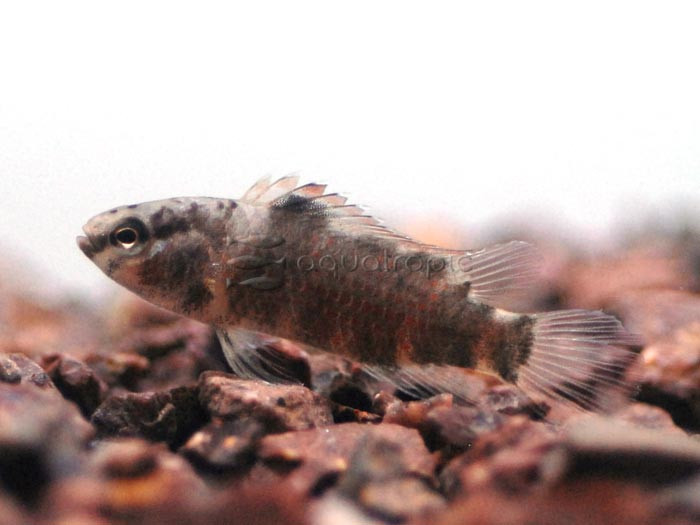Buxar Badis (Badis sp “Buxar”)

There are around two-dozen recognized species of Badis, all confined to South and Southeast Asia. This genus, along with the closely related Dario, comprises a small family whose members are known commonly as chameleonfishes due to their ability to rapidly darken or lighten their colors. In turn, these are close relatives of the Asian leaffishes, which together form the sister group to the gouramis and snakeheads.
Unlike the gouramis, Badis does not possess a labyrinth organ for breathing atmospheric oxygen. These small fishes, none of which grow larger than about 2 inches, are found in slow-moving, turbid streams, rather than stagnant marshes, so there’s really no need to be gulping air.
The Buxar Badis comes to us from the Buxa National Park in West Bengal, India. Compared to the true Badis (B. badis), this fish has more red in its fins, as well as some prominent red spots on the scales. Dutch ichthyologist Stefan van der Voort has recently identified it as being B. singenensis, giving the following traits as diagnostic…
“(1) A black blotch posterodorsally on its opercle. (2) Three distinct dark blotches at the dorsal fin base, the first blotch behind the third spine, the second behind the sixth dorsal fin spine, the third behind the fifth and sixth soft dorsal fin ray; another distinct dark blotch at the anal fin base behind the fifth soft anal fin ray.”
Badis are an ideal fish for a smaller, planted aquarium, even though the habitats they originate from are often quite drab and plant-free. However, do note that they are likely to prey upon smaller shrimps, which can make them less-suitable for those aquarists desiring crustaceans. Feeding is also a bit troublesome, as dry foods are more often than not refused, necessitating frozen and live foods.
Males tend to quarrel among themselves, so care should be taken if housing several together in tight confines. Males are the more colorful sex, with females being smaller, rounder and duller. This group spawns in caves, with up to 100 eggs being laid. They’ll hatch and become free-swimming with another week or so, requiring minute foods like microworms or brine shrimp nauplii.